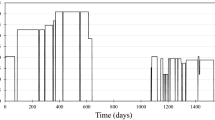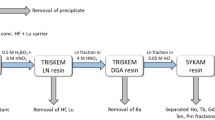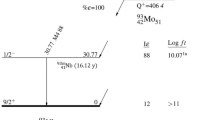Abstract
OF the five first Chinese nuclear test explosions, No. 3 and No. 5 detonated on May 9, 1966, and December 28, 1966, respectively, have been the most powerful. According to the U.S. Atomic Energy Commission1 both explosions were in the lower end of the intermediate range, that is, they corresponded to a few hundred kilotons of TNT.
This is a preview of subscription content, access via your institution
Access options
Subscribe to this journal
Receive 51 print issues and online access
$199.00 per year
only $3.90 per issue
Buy this article
- Purchase on Springer Link
- Instant access to full article PDF
Prices may be subject to local taxes which are calculated during checkout
Similar content being viewed by others
References
United States Atomic Energy Commission: Note to Editors and Correspondents, May 20, 1966, and December 28 1966.
Sever, Y., and Lippert, J., Nuclear Instruments and Methods, 33, 347 (1965).
Lippert, J., Some Applications for Semiconductor Detectors in Health Physics (in the press).
Edvarson, K., Löw, K., and Sisefsky, J., Nature, 184, 1771 (1959).
Freiling, E. C., and Kay, M. A., Nature, 209, 236 (1966).
Author information
Authors and Affiliations
Rights and permissions
About this article
Cite this article
AARKROG, A., LIPPERT, J. Comparison of Relative Radionuclide Ratios in Debris from the Third and the Fifth Chinese Nuclear Test Explosions. Nature 213, 1001–1002 (1967). https://doi.org/10.1038/2131001a0
Received:
Issue Date:
DOI: https://doi.org/10.1038/2131001a0
Comments
By submitting a comment you agree to abide by our Terms and Community Guidelines. If you find something abusive or that does not comply with our terms or guidelines please flag it as inappropriate.



